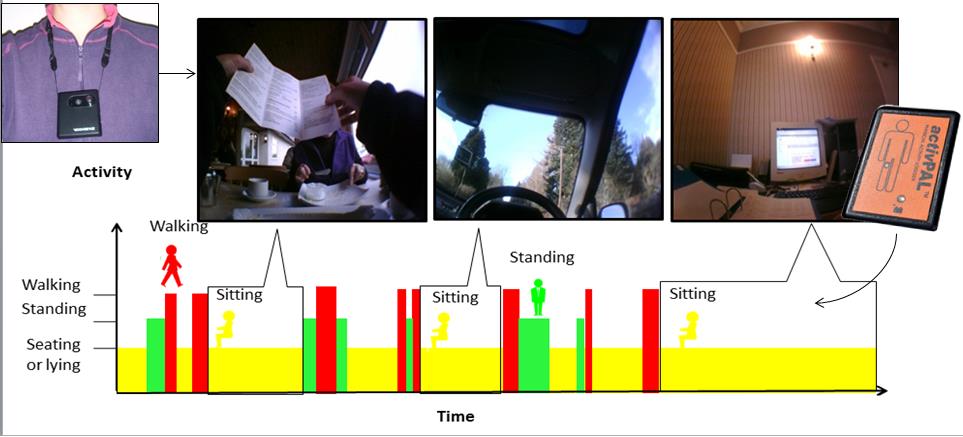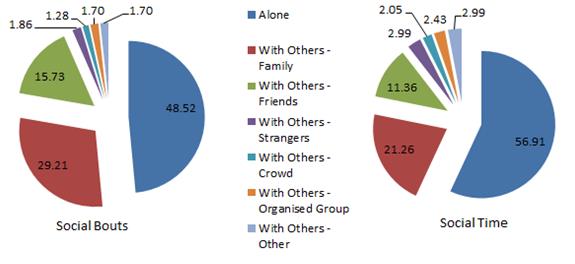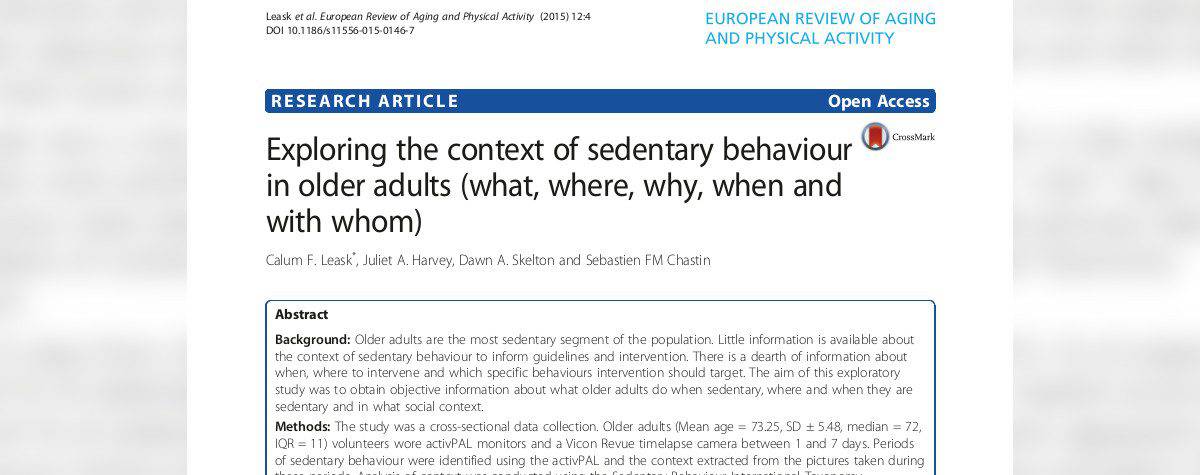
Measurement in Physical Education and Exercise Science Special Issue on Sedentary Behaviour
October 15, 2015
Of possible interest: Please complete this brief survey
November 25, 2015Today’s post comes from PhD student Calum Leask, describing his new paper, which is available here. You can find more on Calum at the bottom of this post.
Spending too long sedentary is associated with a multitude of physical and mental health risks. Of all sub-groups, older adults are the most sedentary and spend an average of 8.5 hours a day sitting down. Everybody is living longer now than ever before and therefore, it is important to make sure that these additional years can be as healthy as possible. One simple way this can be done is by reducing the amount of time spent sitting and interrupt prolonged (>60 mins) seated periods. Depending on the context of older adults’ sitting (for example what, when, where and with whom are these periods occurring), some sedentary bouts may be easier / more difficult to break up. Therefore, gaining this information may provide valuable guidance for future research. This is one of the first studies to explore the context of sedentary behaviour in older adults using objective measures (an activity monitor and wearable camera) and this study formed the first stage of my PhD research. The study was co-authored by Juliet Harvey, Professor Dawn Skelton and Dr Sebastien Chastin at the Institute of Applied Health Research in Glasgow Caledonian University.
For this study, 36 older adults (13 male and 23 female) were recruited and wore an activity monitor and timelapse camera for between 1 and 7 days. Participants had a mean age of 73 years and were recruited from the Glasgow Caledonian University Older Adult Volunteer Research Database. The activity monitor was attached to the individuals’ leg and detected both movement and posture in order to identify the periods in which participants were sedentary. The timelapse camera was worn on a lanyard around the participants’ neck and automatically captured an image of the physical environment from a first person perspective when a change in light or temperature was detected. The images taken during the sedentary periods identified by the activity monitor were then examined using an international classification system (SITONAUMY) to describe what, where, when, why and with whom the sedentary periods were occurring. The concept of using the activity monitor and camera images in combination is visible below.

In total, 52 days of data from 36 participants were available for analysis. Participants spent the majority of their sedentary time (70.1% at home) and 22.9% of their non-screen sedentary behaviour reading. Whilst the deleterious effects of sitting too much have already been discussed, activities like reading are cognitively stimulating and facilitate cognitive function, especially during aging. Therefore, it should be questioned whether future interventions should target these periods, or solely focus on sedentary activities which are cognitively passive.

A large portion of older adults’ sedentary time (56.9%) was spent alone. Loneliness increases the risk of prolonging sedentary time in this population; therefore older adults living alone may be an important sub-group to specifically target in future interventions. The social sedentary activities which this sample participated in were prolonged (18% of sedentary time) yet infrequent (6.9% of sedentary bouts). Socialising, like reading, has a mental health benefit, therefore it may be suggested that sedentary activities in specific contexts should be targeted, as opposed to generically aiming to reduce sedentary behaviour.

Whilst this study was conducted on a relatively small convenience sample, some of the results, including average daily sedentary time (14.2 hours) and television viewing time (4.3 hours), compare favourably to larger previously published works. Although using objective measurement (as conducted here) has been shown as more accurate than subjective means, the assessment is quite costly and due to the vast amount of data collected, requires intensive data processing and coding. However, the findings provide detailed insight into the context of older adults’ sedentary behaviour and provide specific guidelines for future interventions, although these results should be confirmed in a larger and representative population of older adults.
The full text may be found here: http://www.eurapa.net/content/12/1/4

Calum Leask
Calum Leask is a PhD Student in the School of Health and Life Sciences at Glasgow Caledonian University, Scotland. His research focuses on reducing sedentary behaviour in older adults and more specifically, developing strategies to help older adults identify and reduce prolonged seated periods. For further information, please contact: calum.leask@gcu.ac.uk




